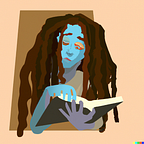Rap’s Impact on Language: How Slang and Catchphrases Shape Pop Culture
Rap music has a profound influence on popular culture, extending beyond its musical style. One of its most notable impacts is the way it shapes language, introducing new slang terms and catchy catchphrases that permeate everyday conversations and contribute to the evolution of our linguistic landscape.
This blog post aims to explore the fascinating relationship between rap, language, and the broader influence it has on shaping our expressions and pop culture.
The Birth of Rap Slang:
Rap slang finds its roots in a variety of sources, including African American vernacular, jazz, and spoken word traditions.
In the 1980s and 1990s, rap artists began developing their own lexicon, using inventive wordplay, metaphors, and unique expressions to craft their lyrics.
Artists like Snoop Dogg, E-40, and A Tribe Called Quest not only introduced slang terms but also popularized them among their fans and the wider community.
Catchphrases that Stick:
Rap has a remarkable ability to generate memorable catchphrases that become deeply embedded in our cultural fabric. These catchphrases often possess characteristics such as brevity, wit, and relevance to social and cultural contexts.
Examples like “Straight Outta Compton” or “Cash Me Outside, How ‘Bout Dat” have transcended the rap genre, becoming ubiquitous in popular culture and transforming into symbols of a particular era.
Regional and Subgenre Slang:
Rap’s regional diversity has contributed to the proliferation of distinct slang dialects. Different regions and subgenres have developed their own unique linguistic expressions and phrases.
For instance, trap music has influenced the emergence of terms like “lit,” “turn up,” and “trap house.” These region-specific and subgenre-specific slang words reflect the experiences and identities of rap artists and their communities.
Mainstream Integration:
Rap slang and catchphrases have successfully made their way into mainstream media, advertising, and internet culture.
Social media platforms have played a pivotal role in amplifying rap’s linguistic impact, with hashtags and viral challenges incorporating rap-inspired language.
The adoption of these terms by the broader public is both a testament to rap’s cultural influence and a source of debate concerning authenticity and appropriation.
Linguistic Innovation and Evolution:
Rap is known for its linguistic innovation and pushing the boundaries of expression. Artists employ various creative language techniques such as wordplay, double entendre, and neologisms to captivate their audience.
In doing so, rap challenges conventional grammar rules and expands the possibilities of language. This constant linguistic evolution within the genre ensures that rap remains at the forefront of language innovation.
Rap’s impact on language extends far beyond the boundaries of its music. Through the introduction of slang terms and catchy catchphrases, rap has transformed the way we communicate and has become an influential force in shaping pop culture.
The birth of rap slang, the proliferation of memorable catchphrases, regional and subgenre-specific language, mainstream integration, and linguistic innovation all contribute to rap’s enduring influence on our everyday expressions.
By appreciating and analyzing rap’s impact on language, we gain insight into the cultural significance and ongoing evolution of this dynamic genre.
If you enjoyed reading this, I would greatly appreciate it if you could show your support by buying me a coffee. Your generosity would mean a lot to me!
Made with AI-assistive technology
